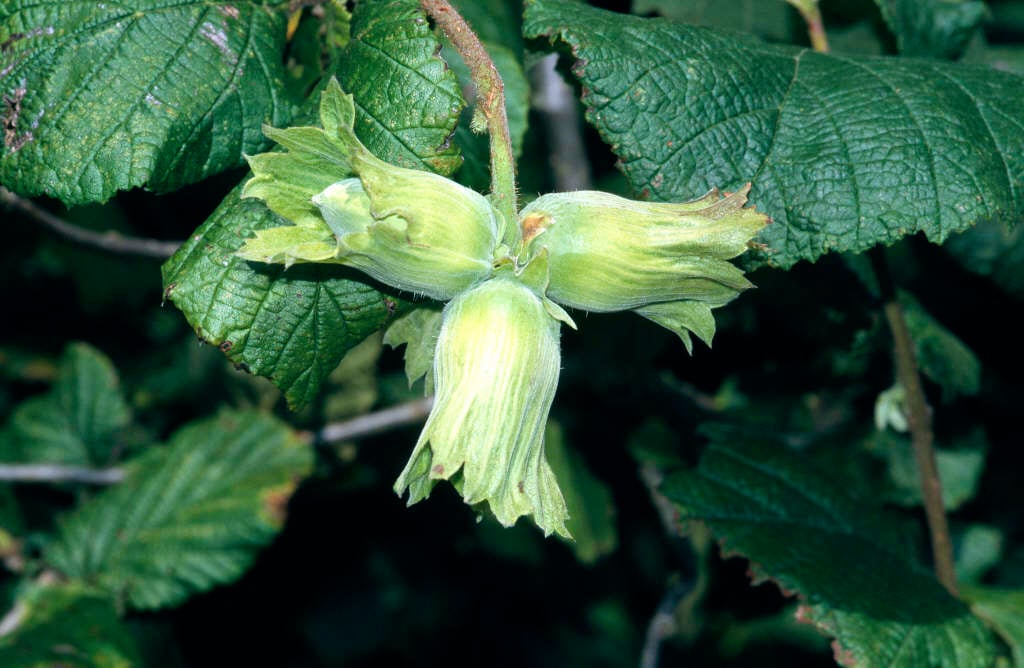Corylus maxima 'Lambert's Filbert'
filbert 'Kentish Cob'
A large deciduous shrub with broad green leaves. Pendulous, pale yellow catkins are followed by an edible nut. This is a reliable filbert with a good flavour; growing at least 2 cultivars ensures cross pollination
Synonyms
Corylus maxima 'Lambert's Filbert'Corylus 'Hazel Kent Cob'
see moreCorylus maxima 'Grote Lambertsnoot'
Corylus maxima 'Longue d'Espagne'

Buy this plant
Size
Ultimate height
2.5–4 metresTime to ultimate height
10–20 yearsUltimate spread
2.5–4 metresGrowing conditions
Moisture
Moist but well–drained, Well–drainedpH
Alkaline, NeutralColour & scent
| Stem | Flower | Foliage | Fruit | |
| Spring | Yellow | Green | ||
|---|---|---|---|---|
| Summer | Green | |||
| Autumn | Green | Brown | ||
| Winter |
Position
- Full sun
- Partial shade
Aspect
North–facing or West–facing or South–facing or East–facing
Exposure
Sheltered Hardiness
H6Botanical details
- Family
- Betulaceae
- Native to GB / Ireland
- No
- Foliage
- Deciduous
- Habit
- Bushy
- Genus
Corylus are deciduous trees and large shrubs with broad leaves, and showy male catkins in early spring, followed by edible nuts
- Name status
Accepted
- Horticultural Group
- This genus produces fruit, but not necessarily edible fruit
How to grow
Cultivation
For fruit production, grow as a goblet-shaped bush. Keep clear soil in a 60cm radius around trunk
Propagation
Propagate by chip budding in mid- to late summer or grafting onto clonally produced rootstocks or seedlings in late winter.
Suggested planting locations and garden types
- Cottage and informal garden
- Wildlife gardens
- Wildflower meadow
- Low Maintenance
- Hedging and screens
Pruning
Brutting or breaking sideshoots half way along their length in August followed by shortening the brutted shoots to 3-4 buds when the catkins are shedding pollen in late winter. When necessary remove up to one third of old overcrowded shoots to the main branches
Pests
May be susceptible to caterpillars, gall mites, aphids and sawflies. Squirrels like to feed on the nuts
Diseases
May be susceptible to honey fungus, silver leaf and powdery mildews
Get involved
The RHS is the UK’s gardening charity, helping people and plants to grow - nurturing a healthier, happier world, one person and one plant at a time.